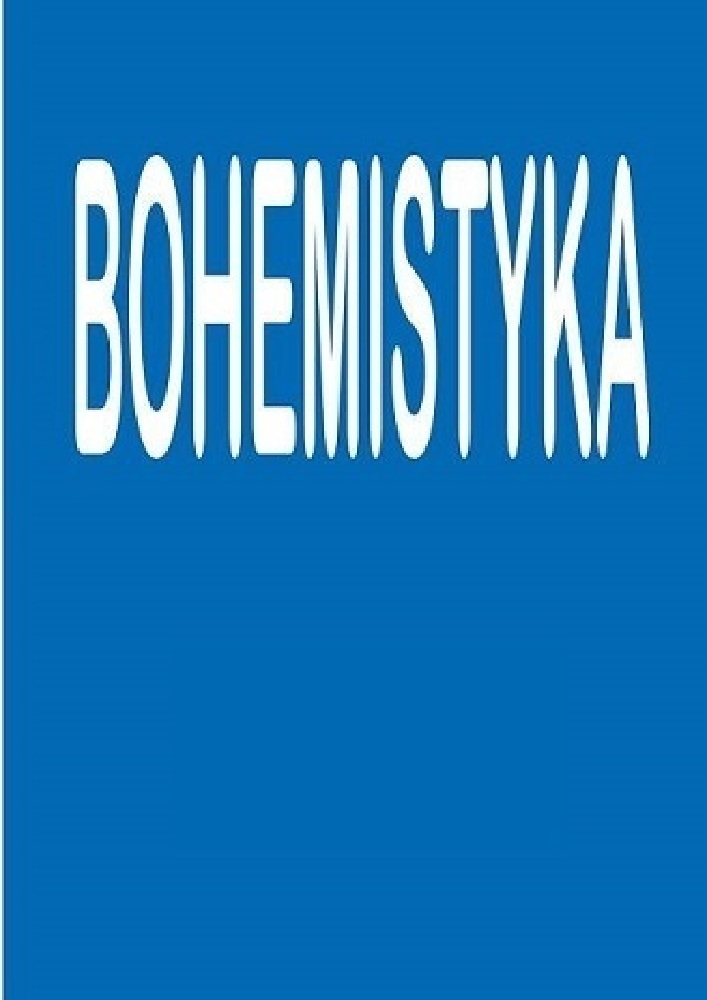Abstrakt
Hlavním cílem příspěvku je představit reprezentaci slovanských stereotypů v publikaci Jerzyho Kosińského Nabarvené ptáče. Slovanské stereotypy, které jsou součástí uvedeného uměleckého vyprávění, jsme rozdělili do šesti okruhů: 1) Nemoci a jejich léčba, 2) Kolik mi zbývá let?, 3) Zlí duchové, 4) Živly, 5) Koloběh přírody, 6) Křesťané versus židé. Každou oblast zastoupených stereotypů dokládáme citacemi z Kosińského narativu. Ačkoliv je daný román zařazován primárně mezi literární texty tematizující druhou světovou válku, netvoří válečný konflikt stěžejní dějovou linii příběhu, ale tvoří jakousi bázi, prostřednictvím které jsou rozvíjena obecně lidská témata, problematika multikulturality, multietnicity nebo rozdílného vnímání axiologických, morálních a etických hodnot a jejich postavení na hierarchickém žebříčku
jedinců, a to prostřednictvím prezentace vybraných slovanských stereotypů
Bibliografia
Bohn T. M., 2020, Bagpipe Players and Painted Birds: Some Reflections on Writing the History of the People in the Marshes from a German Perspective. Journal of Belarusian Studies, 10(1), 32–43.
Carpenter Ch. D., 2017, A Re-Appropriation of Jerzy Kosinski ́s Moral Universe in Light of Emmanuel Levinas ́ Ethical Demand for the Stranger. Dallas: The University of Texas. Online: https://utdir.tdl.org/bitstream/handle/10735.1/5962/ETD-5608-035-CARPENTER-8149-20.pdf?sequence=5&isAllowed=y.
Conner M., 2017, The Anti-Human Condition: Violence, Identity, and Coming-of-Age in The Painted Bird. Undergraduate Student Research Awards. Undergraduate Student Research Awards, 35. Online: https://digitalcommons.trinity.edu/infolit_usra/35.
Epp E. J., 2020, The Jews and the Jewish Community in Oxyrhynchus: Socio-Religious Context for the New Testament Papyri. „Perspectives on New Testament Textual Criticism”, 2 3–40.
Groppo P., 2021, Death Games and the Persistence of Memory: JG Ballard’s World War II Fictions. „Ilha do Desterro”, 74(1), 129–146.
Hébert V., 2020, The Problem of Human Rights after the Holocaust. In S. Gigliotti, H. Earl (eds.), A Companion to the Holocaust. New York: John Wiley & Sons Ltd., s. 553–575.
Hopfinger M., 2021, We Are All Witnesses. Instead of an Introduction. In M. Hopfinger & T. Żukowski (eds.), The Holocaust Bystander in Polish Culture, 1942–2015 ). Cham: Palgrave Macmillan, s. 1–39.
Kosiński J. N., 2019, Nabarvené ptáče. Praha: Argo.
Mašát M., 2021, Representation of Selected Aspects of World War II and Their Influence on Personality Transformation in the Book Painted Bird by Jerzy Kosiński. Linguistics and Literature Studies, 9(3), 84–90.
Shpylova-Saeed N., 2019, Speaking Silence in Jerzy Kosiński ́s Painted Bird. Pennsylvania Literary Journal, 11(1), 169–184.
Stroup Ch., 2020, The Christians Who Became Jews: Acts of the Apostles and Ethnicity in the Roman City. Yale: University Press.
Licencja
Prawa autorskie (c) 2022 Milan Mašát

Utwór dostępny jest na licencji Creative Commons Uznanie autorstwa – Użycie niekomercyjne – Bez utworów zależnych 4.0 Międzynarodowe.




